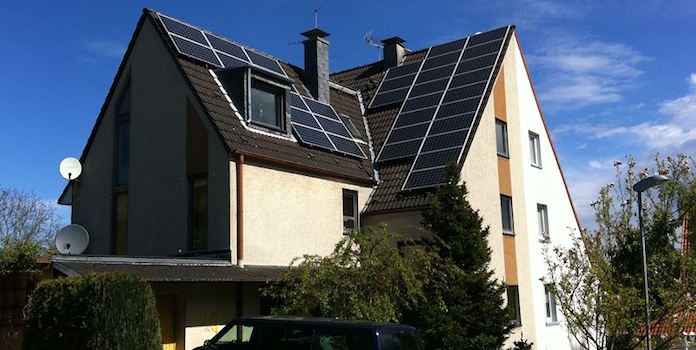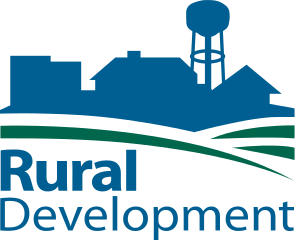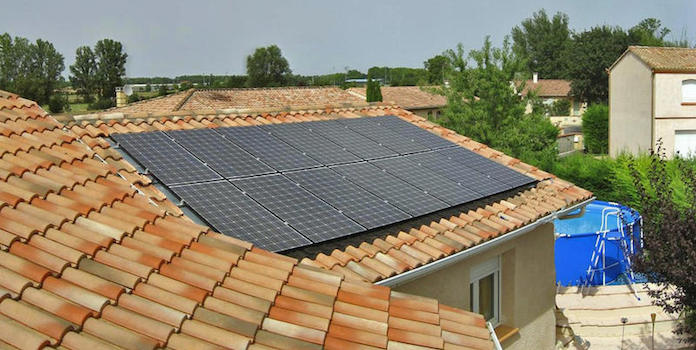What Solar Panel Grants Are Available to Homeowners?

Solar panel grants can reduce your costs to go solar
Interested in ways to drop your total installation cost? Maybe you’ve heard about solar panel grants and are wondering if there’s any you qualify for?
Well, you’ve come to the right place. Today, we’re focusing on grants for solar installations in the United States. Grants are a type of financial aid you don’t have to repay, typically given by a government or private organization.
Right off the bat, you should know that grants for residential solar are extremely scarce, though they do exist. Much more common are tax credits, utility rebates, and performance incentives for residential solar (more on these in the last section).
Most actual grants for solar installations are financed through the federal government and are designed for large-scale business or community projects. While homeowners typically can’t apply for these grants individually, oftentimes local residents benefit from the projects. For example, Xcel Energy’s grant program in Minnesota helped fund a large-scale community solar garden for individuals who can’t install solar on their own roofs.
Below, we summarize the different grants available for residential solar installations in the US, laying out who sponsors the program, who’s eligible for the grant, and available amounts.
We’ll start with the 2 state-sponsored programs and end with the federal programs.
#1 Small Scale Solar Grants (Rhode Island)

- Sponsor: Commerce RI
- Incentive Amount: Up to $10,000 for residential installations owned by the homeowner
- Individual Homeowners Can Apply? Yes
Commerce RI’s Small Scale Solar Grants program is designed to encourage adoption of photovoltaic solar and solar hot water technology among Rhode Island homeowners, businesses, and local governments.
This is one of the few grants in the country that most local homeowners are eligible for. Homeowners installing solar receive grants based on the size of their installation as well as the ownership of the system – if the homeowner owns the solar installation (instead of leasing or through a PPA), they receive a higher incentive.
For homeowner-owned systems, you’ll receive $1.05 per watt, with a cap of $10,000. If you finance through a lease or PPA, you’ll receive $0.70/watt, with a cap of $5k. For an average-sized 5kW installation, this works out to:
- $5,250 for direct-ownership
- $3,500 for lease or PPA financing
Installations must be under 10kW to be eligible and installers must apply on behalf of the homeowner. If you’re in Rhode Island, this grant is a no-brainer!
#2 High-Performance Building Incentives Program (Pennsylvania)

- Sponsor: Pennsylvania Dept of Community and Economic Development
- Incentive Amount: Lesser of 10% of project cost or $500,000
- Individual Homeowners Can Apply? Yes
Businesses and homeowners can apply for this program, which is designed to encourage the building of high performance, energy efficient buildings and homes by offering grants, loans, and loan guarantees. Started in 2009 with a budget of $25 million, incentives vary per project (though typically must be matched by the eligible party) and can be used for land purchases, project design, construction or renovation, registration, and certification, as well as other costs.
Buildings can be either new construction or major renovations and must achieve a high level of ‘green’ certification through LEED, National Green Building Standard, or GBI Green Globes System.
The grant can cover up to 10% of eligible project costs, but you can’t apply for a grant and a loan for the same project. If you are in Pennsylvania and building a new home or gutting an old home, and if you are going all out in the efficiency/renewables department, then take a look at this program for sure.
#3 Renewable Development Fund Grants (Minnesota, Currently on Hold)

- Sponsor: Xcel Energy
- Incentive Amount: Varies
- Individual Homeowners Can Apply? Yes
Although currently on hold, the Renewable Development Fund Grant program began in 1999 with the goal of increasing the amount of renewable energy in Minnesota, promoting local renewable companies, stimulating research, and developing large-scale renewable projects.
Almost $20 million was set aside each year to fund the program, which included projects ranging from solar and wind to hydro and biomass. While the grant isn’t designed to fund small residential solar installations, there are currently a handful of active solar projects in the state funded by the grant program, including a 1 MW community garden for homeowners or renters who can’t install solar on their own property.
As stated, the program has been placed on hold. If you live in Minnesota, however, it is worth checking on regularly for future developments.
#4 High Energy Cost Grants (Federal)

- Sponsor: United States Department of Agriculture (USDA) Rural Development
- Incentive Amount: $50,000 to $3 million
- Individual Homeowners Can Apply? No
With grants up to $3 million, this isn’t really for individual residents, but entire communities looking to better their quality of life.
State and local governments, tribal groups, non-profits, and businesses can apply for the USDA’s High Energy Cost Grant. The program is designed for rural communities with extremely high household energy costs – at least 275% above the national average. For example, the national average electricity price is about $0.12 per kilowatt-hour, so local electricity prices need to be at least $0.33 per kilowatt-hour.
Funds may be used for renewable energy – including both on- and off-grid solar, wind, hydropower, or biomass projects – as well as energy efficiency improvements, or to construct or improve equipment for traditional energy sources like natural gas and petroleum.
#5 REAP Grants (Federal)

- Sponsor: USDA Rural Development
- Incentive Amount: 25% of total project costs
- Individual Homeowners Can Apply? Yes, but only agricultural producers (aka farmers)
To help lower the cost of energy and increase energy independence in rural areas, the USDA offers grants through their Rural Energy for America Program to rural small businesses as well as agricultural producers (farmers and growers) interested in constructing renewable projects like solar, wind, biomass, and geothermal or energy efficiency measures like HVAC upgrades, insulation, lighting, and other equipment.
Grants are equal to 25% of the project cost and given out once or twice a year, depending on the amount. The minimum grant amount is $2,500 and the max is $500,000. The program also offers guarantees on loans, up to 75% of the total project costs. Applicants can combine the loan and grant funding as well, though the individual applicant must provide at least 25% of the total project cost.
#6 Defunct Solar Panel Grant Programs
There are several grant programs that once offered financing for solar or other renewable projects, but have since ceased to function (or at least appear to be defunct) as of May 2017. These include the federally-sponsored 1603 Program, the US DOE’s Tribal Energy Program, and HUD’s Green Retrofit Program for Multifamily Housing (which ran out in 2012).
Other Types of Incentives and Financing
As mentioned at the beginning of this article, there are many types of incentives and financing beyond grants for residential solar. Take a look below for some very common financial incentives to help lower your overall investment in solar.
Federal and state tax credits
If you are looking for ways to drop your solar cost, read up on the federal tax credit. This is one of the best incentives out there. It drops your total installation cost by 30% and literally saves you thousands of dollars! For example, if you spent $18k on your solar installation, filing for the credit would allow you to avoid $5,400 in taxes, dropping your total investment to just $12,600.
This tax credit begins to phase out in 2019, so be sure to take advantage of this great incentive before then!
Similar to the federal government, some states also offer tax credits for homeowners going solar:
- South Carolina offers a 25% tax credit, with a limit of $3,500
- New York also offers a 25% tax credit for your solar installation
- Oregon provides a tax credit equal to $1.30 per watt, up to a whopping $6,000
Be sure to do some research to see if your state offers any tax credits for solar installations!
Utility or local government rebates
Many city or county governments, as well as utility companies, offer rebates for homeowners installing solar. These are typically based on the size of your installation, on a $ per kW amount. While these are getting more and more uncommon, there’s a few still out there. Here are some highlights so you have an idea of what to expect:
- Austin Energy offers $0.60 per watt for residential solar installations
- California’s Ukiah Utilities offers $0.28 per watt for residential solar in 2017 (p.4)
- Owatonna Public Utilities in Minnesota offers $0.50 per watt, up to $5,000
Check out the federally-sponsored Database of State Incentives for Renewables & Efficiency to see if any organizations are offering rebates in your area.
Financing options
If you’re interested in grants to drop solar’s high initial investment, be sure to look into solar loans as well! These days, it’s fairly easy to find a loan for your installation. In solar-friendly states, banks and credit unions now offer loans for residential solar. There are even some dedicated solar loan companies out there.
Loans allow you to reap all the benefits of solar ownership (eligibility for rebates and tax credits, increased home value, high financial savings) without footing that initial upfront cost. Of course, you’ll be paying interest on your loan, and that certainly eats a little of your total financial savings, but you’re still better off than if you’d never installed solar in the first place!
No matter if you are eligible for the grants above or not, with all the tax credits, rebates, and other incentives available, you can easily decrease your total cost to go solar.
Did we miss any grants or other incentives? Let us know in the comments below.

